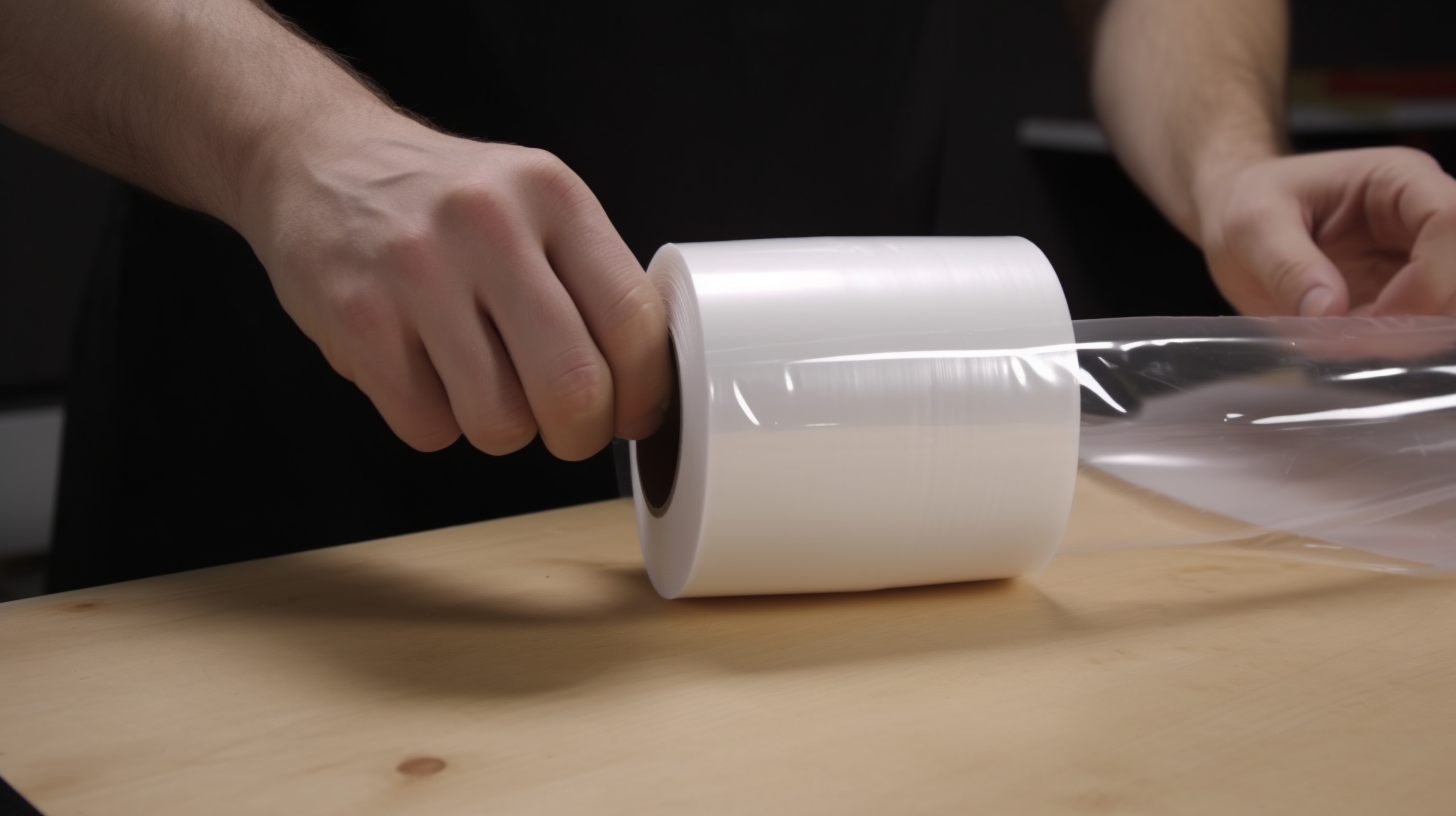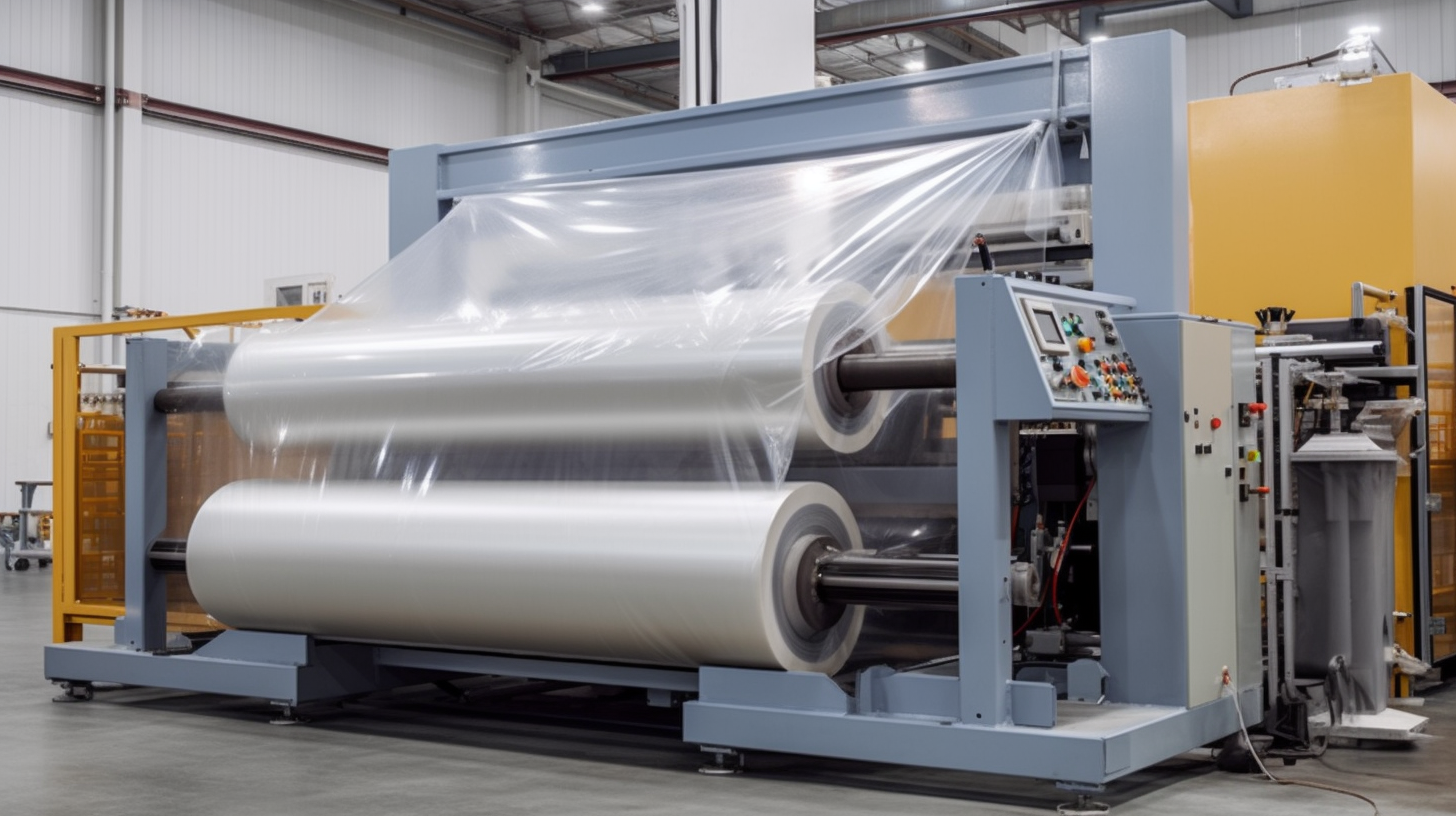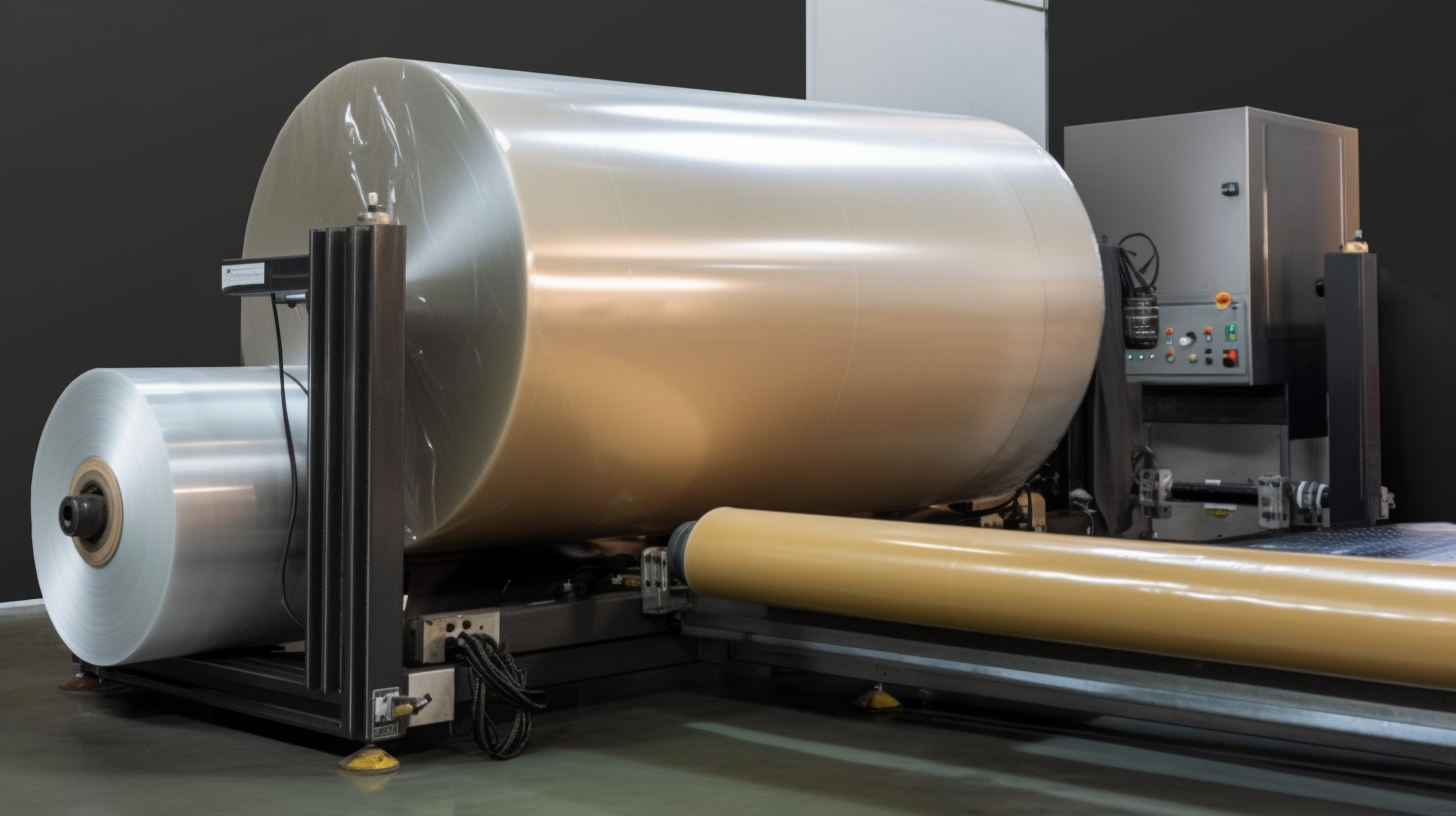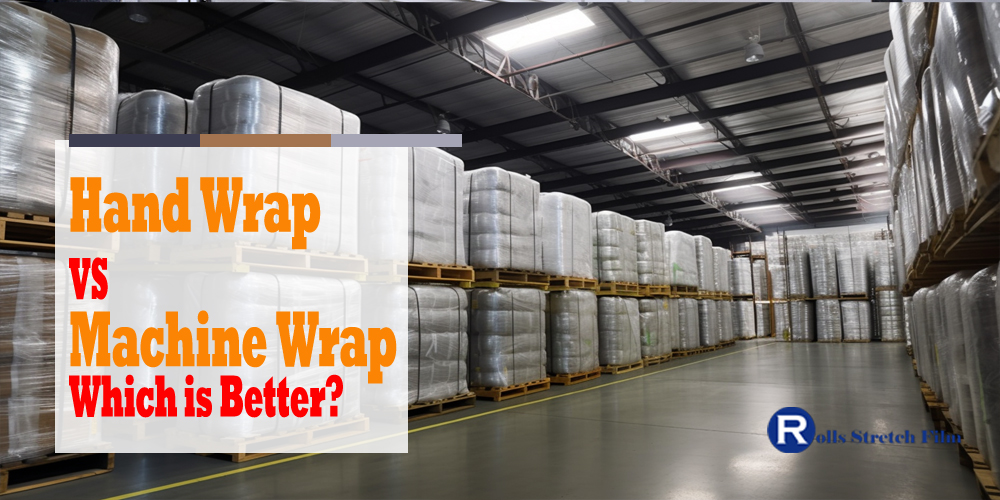When it comes to packaging and protecting goods for transportation or storage, two popular options are hand wrap and machine wrap. Both methods have their pros and cons, and the decision between the two ultimately depends on a variety of factors such as budget, time constraints, and the type of product being wrapped. In this article, we’ll take a closer look at the differences between hand wrap and machine wrap, and help you determine which option is better suited for your needs.
The decision between hand wrap and machine wrap depends on your specific needs and preferences. If you have smaller volumes and require greater control over the wrapping process, hand wrapping may be the better option. If you have larger volumes and need greater efficiency and consistency, machine wrapping may be the better choice.
In this article, we’ll delve deeper into the differences between hand wrap and machine wrap, exploring their unique features, benefits, and drawbacks. We’ll discuss factors such as cost, speed, versatility, and quality to help you make an informed decision that maximizes your productivity and minimizes your costs.
Explanation of hand wrap and machine wrap
Hand wrap and machine wrap are two popular methods of packaging and protecting goods for transportation or storage. While both methods involve wrapping products with plastic film, they differ in terms of process, cost, speed, and quality.
Hand wrap is a manual method that involves wrapping products with plastic film using handheld tools. This method is typically used for smaller volumes and irregularly shaped items. Hand wrapping offers greater control over the wrapping process, flexibility to adjust the tension of the film, and lower upfront costs as there is no need for expensive machinery. However, it can be time-consuming and labor-intensive, leading to inconsistencies in wrapping quality and higher chances of operator error.
Machine wrap, on the other hand, involves the use of automated wrapping machines that wrap products with plastic film quickly and consistently. This method is ideal for larger volumes of uniform items. Machine wrapping offers greater speed, consistency in wrapping quality, and reduced labor costs over time. However, it requires a larger upfront investment in machinery and may have less flexibility in adjusting the tension of the film.
When deciding between hand wrap and machine wrap, consider factors such as the volume and type of items you need to wrap, the speed and efficiency required, your budget, and the level of control and consistency you need over the wrapping process. Both methods have their pros and cons, and the choice ultimately depends on your specific needs and preferences.
Understanding hand wrap

Definition of hand wrap
Hand wrapping a stretch film refers to the manual application of stretch film to a product or a pallet by using one’s hands to stretch and wrap the film around the item. This process involves holding the roll of stretch film and pulling it tightly around the product or pallet, overlapping the layers of film to create a secure, protective layer. The hand-wrapping technique is often used for smaller items or for areas that are difficult to reach with machine-wrapping equipment. Hand wrapping allows for greater control and precision in the application of the stretch film, ensuring that the product or pallet is wrapped securely and protected from damage during transport or storage.
Advantages of hand wrap
The hand-wrapping stretch film offers several advantages, including:
- Flexibility: Hand wrapping allows for more flexibility in the wrapping process, as it is easier to wrap irregularly shaped items or items of varying sizes using hands than with machine-wrapping equipment.
- Cost-effective: Hand-wrapping is a more cost-effective option compared to machine-wrapping equipment, especially for smaller operations or when only a few items need to be wrapped.
- Control: Hand wrapping provides greater control over the wrapping process, allowing the operator to adjust the tightness of the wrap and ensure that the product or pallet is wrapped securely and without gaps.
- Portability: Hand wrap is lightweight and portable, making it easy to move around the warehouse or shipping area as needed.
- Safety: Hand-wrapping reduces the risk of injury associated with operating heavy and complex machine-wrapping equipment, which requires proper training and safety precautions.
- Sustainability: Hand wrapping uses less material compared to machine-wrapping equipment, making it a more sustainable option for wrapping smaller items or quantities.
The hand-wrapping stretch film offers a more flexible, cost-effective, and controllable option for wrapping products or pallets, with added benefits of portability, safety, and sustainability.
Limitations of hand wrap
While the hand-wrapping stretch film offers several advantages, there are also some limitations to consider, including:
- Time-consuming: Hand wrapping can be a time-consuming process, especially for larger or irregularly shaped items. It requires more manual labor and time compared to machine-wrapping equipment.
- Inconsistency: Hand wrapping can result in inconsistent wrapping tension, which can lead to uneven protection of the product or pallet. The lack of consistency can also result in unnecessary waste of stretch film.
- Physical strain: Hand wrapping can be physically demanding, requiring repetitive motion and exertion, which can lead to muscle strain or injury over time.
- Limited stretchability: Hand wrapping requires physical strength and stretching capacity, which can limit the amount of stretch applied to the film, leading to less secure wrapping.
- Lack of automation: Hand wrapping lacks automation, which means that it may not be suitable for large-scale operations that require high volume and speed.
- Film waste: Hand wrapping may result in more film waste due to the difficulty in cutting the film to the correct length and the lack of a film dispensing mechanism.
The hand-wrapping stretch film may not be suitable for all applications and can have limitations such as being time-consuming, physical strain, inconsistency, limited stretchability, lack of automation, and film waste.
Understanding machine wrap

Definition of machine wrap
Machine wrap is an industrial packaging material that is used to tightly secure items, such as pallets and goods. It is a versatile and effective way of protecting goods in transit, providing a strong yet flexible barrier that keeps items secure and stable. Machine wrap is made from polyethylene film, which can be customized to fit the size and shape of the items being packaged. It is available in different strengths, thicknesses, and colors to accommodate various products. In addition, machine wrap offers excellent puncture resistance and containment capabilities for efficient product protection. It also has a low-stretch design that helps ensure stability during shipping and handling while reducing tear strength by up to 20%. As a result of its many beneficial features, machine wrap is an ideal packaging material for businesses looking for effective product protection during transit. Its use can help reduce damage caused by shifting or mishandling during transport which could lead to costly returns. In addition, it provides the benefit of increased efficiency and cost savings due to its ability to be reused multiple times.
Advantages of machine wrap
Machine wrap offers numerous advantages over other methods of product packaging. It is an efficient, cost-effective, and eco-friendly way to provide secure, reliable product protection. The process is fast and automated, which reduces labor costs and increases speed to market. Machine wrap also provides better protection than other packaging alternatives such as shrink wrap or void-fill products since it produces less waste and uses less material in the wrapping process. In addition, machine wrap provides a more aesthetically appealing look with consistent dimensionality and product presentation that can help increase sales. Finally, machine wrap offers a higher degree of safety for fragile items by securely binding them together so they are less likely to be damaged during shipping or handling. Through these advantages, machine wrap offers an excellent option for businesses looking to protect their products efficiently while achieving cost savings in the process.
Limitations of machine wrap
Machine wrap has several advantages over other packaging methods, however, there are some limitations. Firstly, machine wrap may not be as reliable or secure as other packaging methods such as shrink wrapping or box strapping. It is not suitable for heavier items, since the polythene used in machine wrap does not offer significant protection from crushing or damage from sharp objects. Furthermore, machine wrap uses a large amount of plastic, meaning it has an environmental footprint that may be worth considering. As with any packaging method, worker safety must also be taken into consideration when operating the machinery. Finally, machine wrap cannot be used to package irregularly shaped items; these may need to be placed in boxes for added protection during transit. It is therefore important to consider all the possible limitations of machine wrap before deciding if it is right for your application.
Comparing hand wrap and machine wrap
| Comparison |
Hand Wrap |
Machine Wrap |
| Consistency |
May vary due to individual wrapping technique |
Consistent due to automated process |
| Time efficiency |
Can take longer to wrap individual items |
Faster wrapping process |
| Cost |
May be cheaper if done in-house |
May be more expensive due to equipment cost |
| Physical strain |
Can cause strain or injury with improper technique |
Less physical strain on workers |
| Pallet stability |
May not provide as much stability as machine wrap |
Provides more consistent stability |
| Material usage |
May use more or less material depending on technique |
Consistent use of material |
| Customization |
Can be customized to fit specific items |
Limited customization options |
| Quality control |
Relies on individual skill for consistent quality |
Can be more easily monitored for consistent quality |
Efficiency
When it comes to efficiency, there are distinct differences between hand wrapping and machine wrapping. Hand-wrapping typically involves more manual labor than machine-wrapping, which means that the time taken to wrap a given object is longer than if it were machine-wrapped. The same can be said for the cost associated with hand-wrapping. It takes more time than machine-wrapping, so it is typically more expensive to hand-wrap an object than to have it machine-wrapped. On the other hand, machine-wrapping can be done quickly and at a lower cost since there is less manual labor involved. Additionally, with machines wrapping uniformly in a short amount of time, there is less risk of damage or wear and tear to the product being wrapped. In conclusion, while both hand-wrapping and machine-wrapping have their advantages and disadvantages, it is clear that machine-wrapping is more efficient than hand-wrapping based on time and cost.
Cost
When it comes to cost, hand wrap and machine wrap come with different considerations. Hand wrapping may require more person-power to handle a large number of pallets, making it more expensive in manpower costs. However, the material cost for hand wraps is generally lower than that of machine wraps due to their simpler packaging process. On the other hand, initial investments for machinery may be high but can be offset over time as operational costs are generally much lower in comparison to hand wrapping. In addition, machine wraps provide better security and protection against dust and moisture which helps reduce product damage when shipping, offering businesses more value for their money. Ultimately, businesses must weigh the tradeoffs between these two pallet wrapping methods when deciding which option best fits their needs and budget.
Consistency of application
The consistency of application when comparing hand wrap and machine wrap is particularly pertinent. Hand wrapping yields a much less uniform result due to the capacity for human error and a lack of tightness control as compared to automated machines. Machine wrap is more reliable, providing exact repeatable tension on each load, leading to excellent film usage efficiency, and ultimately leading to cost savings. Additionally, automated devices drastically reduce the number of injuries associated with manual processes due to not having to physically strain while applying the film. The overall consistency provided by machine wraps makes them an ideal choice in comparison to hand wraps when looking for reliability and cost-effectiveness.
Quality of wrapping
Hand wrap is a manual process that requires the use of high-quality stretch film. It provides effective protection and stability, while also allowing flexibility in adapting to different size items or loads. Hand wrapping helps to avoid product damage due to shifting during transit, ensuring your products get delivered in the best condition possible. The main advantage of hand wrapping is that it is cost-effective, allowing you to save time and money.
On the other hand, machine wrap uses pre-stretched film with mechanical tension on the rollers, which can provide a more secure and consistent wrap every time and reduce waste associated with manual application. It offers higher quality wrapping than hand wrapping by tightly securing packages for transportation and storage, providing superior protection against dust and moisture.
Physical strain on the user
When it comes to the physical strain on the user, hand wrap is likely to cause more fatigue and discomfort than machine wrap. Using a hand-wrapping tool requires a repetitive and continuous motion for an extended period, causing muscular strain and fatigue. Machine wrapping does not require as much manual effort since the machine does the work for you. This could lead to less overall stress on the worker’s body, reducing the risk of injury or long-term musculoskeletal pain. Additionally, machine wrapping can often be done more quickly than hand-wrapping, potentially reducing working hours spent packaging products. However, some manual effort may still be required depending on the complexity of the product being wrapped. Ultimately, both methods have their advantages and disadvantages when it comes to the physical strain on the user. It is important to consider these factors when choosing a packaging method for your business.
Factors to consider when choosing between hand wrap and machine wrap
When it comes to choosing between hand wrap and machine wrap for packaging and shipping, there are several factors to consider. Here are some of the most important ones:

- Volume: The volume of items you need to pack is one of the most important factors in determining whether to use hand wrap or machine wrap. If you have a large volume of items to package, a machine wrap will be more efficient and will save you a significant amount of time and effort.
- Time: Hand wrapping is more time-consuming than machine wrapping, so if you have a tight deadline or need to package items quickly, a machine wrap may be a better option.
- Cost: The cost of hand wrap versus machine wrap can also be a factor in your decision. Hand wrap may be less expensive initially, but if you have a large volume of items to pack, the cost of materials and labor can add up quickly. Machine wrap may be more expensive upfront, but can be more cost-effective in the long run.
- Consistency: If you need consistent packaging quality, machine wrap may be a better option, as it is more consistent than hand wrapping, which can vary depending on the person doing the wrapping.
- Fragility of items: If you are packaging fragile items, hand wrapping may be a better option, as it allows for more control over the tightness and pressure of the wrap.
- Environmental impact: If you are concerned about the environmental impact of your packaging, hand wrapping may be a more sustainable option, as it doesn’t require electricity or generate plastic waste like machine wrap.
Ultimately, the choice between hand wrap and machine wrap will depend on your specific needs and priorities.
In conclusion, both hand wrap and machine wrap have their advantages and disadvantages, and the choice between the two will depend on a variety of factors. Hand wrap may be more cost-effective for small volumes or fragile items, while machine wrap is more efficient for larger volumes and time-sensitive packaging needs. Consistency, environmental impact, and the cost of materials and labor are also important considerations. Ultimately, it’s important to carefully weigh the pros and cons of each option and choose the one that best meets your specific needs and priorities.




















